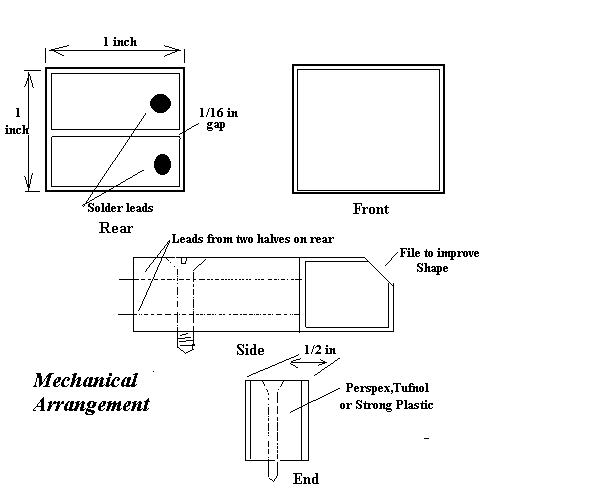CAPACITANCE TOUCHER PADDLE
Bob Newson G4EEM from SPRAT Autumn 1981 Issue 28

The Dot and Dash from the CD4013 are taken to the conventional keyer connections
OPERATION
The capacitor, formed by the touch plate, constantly injects the oscillator frequency into the 4013 catch, holding the 'Q' outputs high. When a plate is touched, the capacitance is effectively shorted to ground, causing the oscillator signal to cease. The 'D' input of the 4013 goes high and the next clock pulse sends NOT Q low. When both plates are touched then both the NOT Q outputs go low and provide iabic keying for those keyers with this facility.
CONSTRUCTION
The touch plates are constructed from standard 1/16 inch double sided fibre glass PCB material. A one square inch of material is cut for each paddle and the side of each square has a 1/16 in gap cut along it's centre. This can easily be done by scribing with a sharp point,heating it with a soldering iron and the copper should be easy to pick out when hot. solder wires to the places shown in the mechanical sketch and tin coat all copper surfaces.
Actual dimmensions, and the spacing between the plates, and the shape of the plastic part of the paddle are left to individual taste
The circuit is powered from the keyer supply, 5 to 15 volts will be ok. Most common mechanical paddles have their common connection grounded, for those which use V+ as common, the 'Q' outputs of the flipflop must be used (pins 1 and 3 of the 4013)

Back to Keyers Page
Back to Home Page


